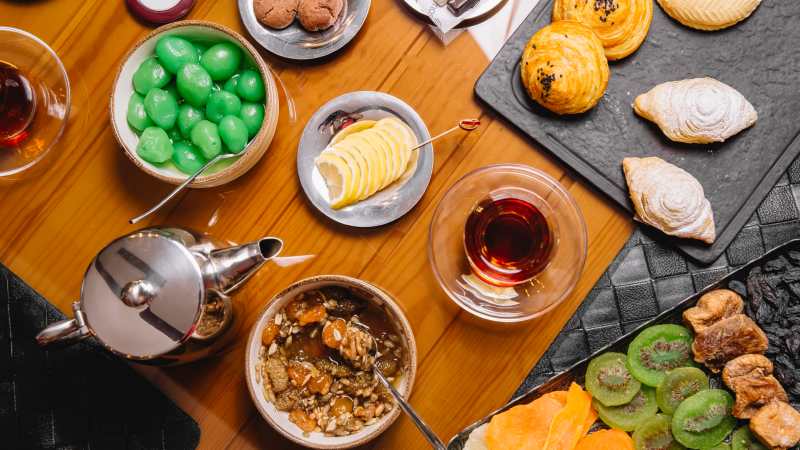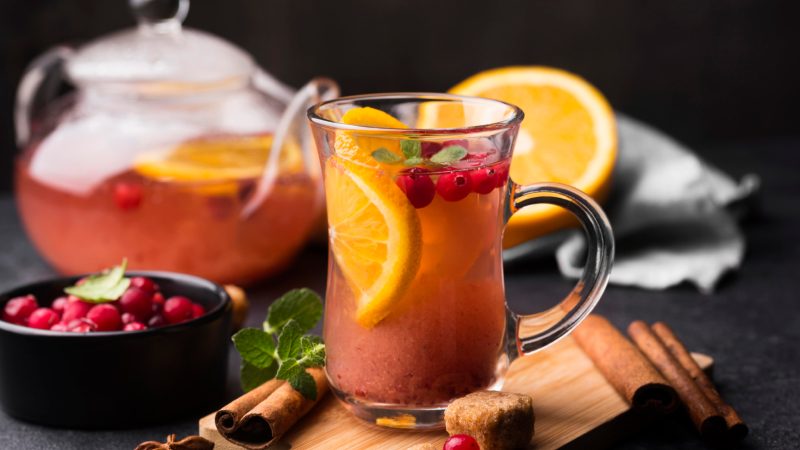Tea ranks as the world’s second most-consumed drink, just after water. From Asia to Europe, Africa to the Americas, tea has become an essential part of daily life. People drink tea not only for its taste but also for its calming effects, health benefits, and cultural importance.
In this article, we will explore everything you need to know about tea—from its origins and varieties to brewing techniques and creative recipes. If you’ve ever wondered how to perfect your cup, this guide on the jalbitedrinks tea recipe will provide everything you need.
1. The Origins of Tea
Tea has a long history, tracing back thousands of years to ancient China. According to legend, Emperor Shen Nong accidentally discovered tea around 2737 BCE when tea leaves fell into his boiling water. Since then, tea has spread across the globe, influencing cultures, trade, and traditions.
Today, tea is grown in many countries, with China, India, Sri Lanka, Kenya, and Japan among the largest producers. Each region contributes its unique flavor profiles and processing methods.
2. Types of Tea You Should Know
There are six main categories of tea, all derived from the same plant (Camellia sinensis), but processed differently:
-
Green Tea – Light, grassy, and rich in antioxidants.
-
Black Tea – Bold, strong, and higher in caffeine.
-
White Tea – Delicate, minimally processed, with subtle flavors.
-
Oolong Tea – Semi-oxidized, offering a balance between green and black teas.
-
Pu-erh Tea – Fermented tea with earthy, deep flavors.
-
Herbal Tea – Technically not “true tea,” made from herbs, flowers, and fruits.
Each type of tea has its own brewing guidelines and unique health benefits.
3. Essential Tools for Brewing Tea
While you don’t need fancy equipment to enjoy tea, a few tools can enhance the experience:
-
Teapot or Infuser – Allows leaves to expand for better flavor.
-
Kettle – To heat water to the right temperature.
-
Strainer – For loose-leaf tea.
-
Tea Cups or Mugs – Choose ceramic, glass, or clay for heat retention.
Good quality water and fresh tea leaves are equally important for a great cup.
4. The Science of Brewing Tea
Preparing tea is both a skill and a science. The three factors that determine flavor are:
-
Water Temperature
-
Green tea: 70–80°C (160–175°F)
-
Black tea: 95–100°C (200–212°F)
-
White tea: 75–85°C (170–185°F)
-
Oolong tea: 85–95°C (185–205°F)
-
-
Steeping Time
-
Green tea: 2–3 minutes
-
Black tea: 3–5 minutes
-
White tea: 4–5 minutes
-
Oolong tea: 3–5 minutes
-
-
Leaf Quantity
-
Standard ratio: 1 teaspoon of loose tea per cup of water.
-
Following these guidelines ensures you don’t end up with bitter or weak tea.
5. The Classic Jalbitedrinks Tea Recipe

To make the perfect cup, follow this simple method:
Ingredients
-
1 teaspoon loose tea leaves (or 1 tea bag)
-
1 cup filtered water
-
Optional: milk, lemon, honey, or sugar
Instructions
-
Heat water to the recommended temperature based on your tea type.
-
Place the tea leaves or bag into a cup or teapot.
-
Pour the hot water over the tea.
-
Steep for the recommended time.
-
Strain and serve. Add extras like honey or milk if desired.
This basic jalbitedrinks tea recipe works as a foundation. From here, you can experiment with flavors.
6. Variations of Tea Recipes
Milk Tea
A popular version where strong black tea is combined with milk and a sweetener. Perfect for morning energy.
Iced Tea
Steep the tea, let it cool, and pour it over ice. Add lemon slices or mint for freshness.
Masala Chai
Originating in India, this is black tea brewed with milk, sugar, and spices such as cardamom, cinnamon, and ginger.
Matcha
A Japanese powdered green tea whisked with hot water, offering a vibrant color and unique taste.
Herbal Blends
Chamomile, peppermint, and hibiscus are soothing caffeine-free options.
These variations showcase how versatile the jalbitedrinks tea recipe can be.
7. Health Benefits of Tea
Tea is more than a comforting drink—it’s packed with health benefits:
-
Rich in antioxidants – Helps fight free radicals.
-
Boosts metabolism – Green tea supports weight management.
-
Supports heart health – Black tea may lower cholesterol.
-
Improves focus – Moderate caffeine enhances alertness without jitters.
-
Promotes relaxation – Herbal teas like chamomile aid sleep and reduce stress.
Consuming tea regularly can be part of a balanced lifestyle.
8. Tea and Food Pairings

Pairing tea with food enhances the experience, much like wine pairings:
-
Green tea – Pairs with light dishes like salads, seafood, or sushi.
-
Black tea – Works with hearty foods like meats and pastries.
-
White tea – Complements fruits and mild cheeses.
-
Herbal teas – Go well with desserts or snacks.
These pairings balance flavors and highlight the unique qualities of both tea and food.
9. Tips for Perfect Tea Every Time
-
Use fresh water, not reboiled.
-
Avoid oversteeping to prevent bitterness.
-
Store your tea in an airtight jar, protected from light and dampness.
-
Experiment with blends to discover new favorites.
Consistency is key, but experimenting is what makes tea truly enjoyable.
10. Creative Ideas Using Tea
Tea is not limited to drinking—it can be used in creative ways:
-
Tea Lattes – Froth milk with strong tea for a café-style drink.
-
Tea-Infused Cocktails – Mix tea with liquor for refreshing blends.
-
Tea Desserts – Use matcha or black tea in cakes, cookies, or ice creams.
-
Cooking with Tea – Marinate meats or flavor broths with tea.
The versatility of the jalbitedrinks tea recipe goes beyond a simple cup.
11. Tea Around the World
Tea cultures vary widely:
-
China – Gongfu tea ceremonies focus on precision.
-
Japan – Matcha ceremonies emphasize mindfulness and tradition.
-
India – Chai is part of daily life.
-
Morocco – Green tea with mint is a symbol of hospitality.
-
England – Afternoon tea with biscuits is a cultural icon.
Exploring global traditions deepens appreciation for this universal beverage.
12. Sustainable Tea Practices
As tea demand grows, sustainability becomes important:
-
Choose ethically sourced teas.
-
Support organic farming practices.
-
Use reusable strainers instead of disposable tea bags.
-
Compost used tea leaves.
Making conscious choices ensures that tea remains available for future generations.
13. Common Mistakes When Making Tea
-
Using boiling water for delicate teas.
-
Leaving the leaves steeping too long.
-
Adding milk to green tea (alters taste negatively).
-
Using poor-quality or expired tea.
Avoiding these mistakes will improve your tea-making experience.
14. Building a Daily Tea Ritual
Creating a daily ritual around tea helps build mindfulness:
-
Morning – Start with energizing black or green tea.
-
Afternoon – Refresh with oolong or iced tea.
-
Evening – Relax with herbal teas like chamomile.
These small habits make tea an enjoyable part of daily wellness.
15. Conclusion: The Joy of Tea
Tea is more than just a drink—it’s a tradition, a comfort, and a connection to cultures worldwide. Whether you enjoy black tea or herbal blends, there’s an endless world of choices to explore.
By learning the basics of brewing, experimenting with variations, and understanding the health benefits of tea, you can truly appreciate the art of tea. Whether you prefer it hot, iced, spiced, or infused, the jalbitedrinks tea recipe offers a foundation for creating something unique and personal every time.

